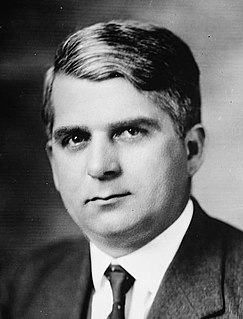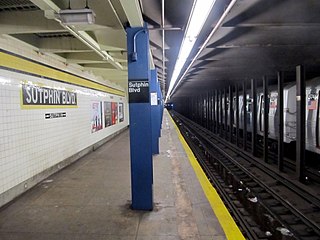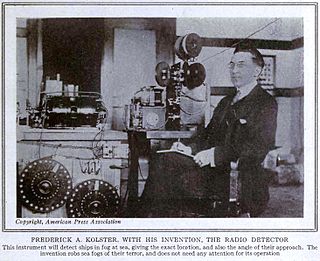Related Research Articles

Starbucks Corporation is an American multinational chain of coffeehouses and roastery reserves headquartered in Seattle, Washington. As the world's largest coffeehouse chain, Starbucks is seen to be the main representation of the United States' third wave of coffee culture. As of September 2020, the company had 32,660 stores in 83 countries, including 16,637 company operated stores and 16,023 licensed stores. Of these 32,660 stores, 18,354 were in the United States, Canada, and Latin America. Starbucks locations serve hot and cold drinks, whole-bean coffee, microground instant coffee known as VIA, espresso, caffe latte, full- and loose-leaf teas including Teavana tea products, Evolution Fresh juices, Frappuccino beverages, La Boulange pastries, and snacks including items such as chips and crackers; some offerings are seasonal or specific to the locality of the store. Depending on the country, most locations offer free Wi-Fi.

RadioShack, formerly RadioShack Corporation, is the trade name of an American retailer founded in 1921. In November 2020, Retail Ecommerce Ventures (REV), a holding company owned by Tai Lopez and Alex Mehr, acquired RadioShack. RadioShack operates primarily as an e-commerce website, a network of approximately 500 independently-owned authorized RadioShack Dealer stores, and as a supplier of parts for HobbyTown.

Clarence Saunders was an American grocer who first developed the modern retail sales model of self service. His ideas have had a massive influence on the development of the modern supermarket. Saunders worked for most of his life trying to develop a truly automated store, developing Piggly Wiggly, Keedoozle, and Foodelectric store concepts.

Fulton Street is a long east–west street in northern Brooklyn, New York City. This street begins at the intersection of Adams Street and Joralemon Street in Brooklyn Heights, and runs eastward to East New York and Cypress Hills. At the border with Queens, Fulton Street becomes 91st Avenue, which ends at 84th Street in Woodhaven.
Alexander's is a real estate investment trust that owns 7 properties in New York metropolitan area, including 731 Lexington Avenue, the headquarters of Bloomberg L.P. It is controlled by Vornado Realty Trust. It was founded by George Farkas and Louis Schwadron in 1928.

James Cash Penney Jr. was an American businessman and entrepreneur who founded the J. C. Penney stores in 1902.
Modell's Sporting Goods was an American sporting goods retailer with locations in the Northeastern United States. Modell's carried both sporting goods and related apparel. Modell's had more than 150 retail locations in ten states and the District of Columbia in 2018. The company reported revenue of approximately $765 million in 2015. Sales in 2019 were $538 million, 96%/4% split between retail/online. Its slogan was "Gotta Go To Mo's."

Sutphin Boulevard is a local station on the IND Queens Boulevard Line of the New York City Subway. Located at Sutphin Boulevard and Hillside Avenue in Jamaica, Queens, it is served by the F train at all times, and the <F> train during rush hours in the peak direction.

Broadway Junction is a New York City Subway station complex shared by the elevated BMT Canarsie Line and BMT Jamaica Line, and the underground IND Fulton Street Line. It was also served by trains of the Fulton Street Elevated until that line closed in 1956. It is located roughly at the intersection of Broadway, Fulton Street and Van Sinderen Avenue at the border of Bedford-Stuyvesant and East New York, Brooklyn. The complex is served by the A, J, and L trains at all times; the C train at all times except late nights; and the Z train during rush hours in the peak direction only.
The Manhattan Company was a New York bank and holding company established on September 1, 1799. The company merged with Chase National Bank in 1955 to form the Chase Manhattan Bank. It is the oldest of the predecessor institutions that eventually formed the current JPMorgan Chase & Co.

48 Wall Street, formerly the Bank of New York & Trust Company Building, is a 32-story, 512-foot-tall (156 m) skyscraper on the corner of Wall Street and William Street in the Financial District of Lower Manhattan in New York City. Built in 1927–1929 in the Neo-Georgian and Colonial Revival styles, it was designed by Benjamin Wistar Morris.

The Marbridge Building is an office establishment at 1328 Broadway, on the east side of Sixth Avenue between 34th and 35th Streets in Herald Square, Manhattan, New York City. It opened in 1909, an 11-story building, utilized in part by Rogers Peet. Until October 1910 it stood opposite the Alpine apartment house, which was at the northeast corner of Broadway and 33rd Street. The Alpine and old stores between 33rd and 34th Streets were demolished to make room for the $5,000,000 Hotel McAlpin near the end of 1910. On the other side of Broadway were located the Macy's Herald Square and Saks Incorporated stores, with the Gimbels store just below.
William D. Modell was an American businessman who chaired the Modell's Sporting Goods retail chain.

The Kolster Radio Corporation was an electronics manufacturer and distributor based in Newark, New Jersey, which went bankrupt in January 1930. It bore the name of its chief research engineer, Frederick A. Kolster. In June 1928, the Columbia Phonograph Company announced plans to market a radio receiving set built by Kolster Radio. The product was sold in the United States, Europe, and Japan.

Loft, Inc. was the world's largest maker and seller of candy in the 1920s. It manufactured its own products and distributed them throughout greater New York City and Newark, New Jersey. Happiness Candy Stores, Inc., was controlled by Loft, Inc. Loft, Inc., merged with PepsiCo following an agreement of merger filed in Wilmington, Delaware in June 1941. Loft Candy Corporation was shortly spun off, acquired by Philadelphia retail magnate Albert M. Greenfield's City Stores Company chain. Rapid expansion followed, with Loft's 2,100 employees making 350 products that were distributed over fifteen states along the Eastern Seaboard and Midwest.
Wallachs was a New York City men's clothing store which once maintained additional locations in Newark, New Jersey. It was a New York institution for more than a century. Together with Roots and F.R. Tripler, Wallachs was part of a nineteen state chain of fifty stores controlled by the Hastings Group. Hastings Group filed for Chapter 11 bankruptcy in November 1995.

The 165th Street Bus Terminal, also known as Jamaica Bus Terminal, the Long Island Bus Terminal, Jamaica−165th Street Terminal, or simply 165th Street Terminal, is a major bus terminal in Jamaica, Queens. Owned by MTA Regional Bus Operations, the terminal serves both NYCT and MTA Bus lines as well as NICE Bus lines to Nassau County, and was a hub to Green Bus Lines prior to MTA takeover. It is located at 89th Avenue and Merrick Boulevard, near the Queens Library. Most buses that pass through Jamaica serve either this terminal, the Jamaica Center subway station at Parsons Boulevard, or the LIRR station at Sutphin Boulevard.

Eugene L. De Rosa was an Italian American architect, called at birth Eugenio. He worked in New York City and specialized in the design of theatres.

Majestic Radios was an American radio brand from 1927 to 1955, trademarked as "The Mighty Monarchs of the Air". Noted for their high quality, they were initially manufactured by the Grigsby-Grunow Company of Chicago. After Grigsby-Grunow's demise in 1934 during the Great Depression, Majestic Radios continued to be made through subsequent corporate ownership changes and reorganizations for another twenty-two years. The Majestic Radio & Television Corporation was formed to produce the radios in the 1930s and 1940s. Following Majestic Radio & Television's liquidation in 1949, Majestic-brand radios were made by a division of the Wilcox-Gay Corporation at their Michigan factory in the 1950s.
References
- 1 2 "Rise In Net Shown By Davega Stores – $118,998, or 24c a Common Share, Against $62,228, or 2c — Other Reports". The New York Times. June 22, 1953. p. 26. Retrieved February 12, 2020.
- 1 2 "'Financial And Business Sidelights Of The Day". The New York Times. November 6, 1954. p. 25. Retrieved February 12, 2020.
- 1 2 "Diamond Jubilee Award (photo caption)". The New York Times. May 27, 1954. p. 5. Retrieved February 12, 2020.
- 1 2 New Davega Store, The Wall Street Journal , April 23, 1932, p. 12.
- ↑ Baker, Richard T. (April 23, 1954). "Inquiry's TV Rating Is Behind Kefauver's". The New York Times. p. 1. Retrieved February 12, 2020.
- 1 2 "Advertising and Marketing News". The New York Times. April 8, 1954. p. 48. Retrieved February 12, 2020.
- ↑ Kolster, Wall Street Journal, November 26, 1928, p. 12.
- ↑ "Majestic Radio Offering Closed". Brooklyn Daily Eagle . October 30, 1936. p. 27.
- ↑ New Davega Store, Wall Street Journal, November 14, 1928, p. 13.
- ↑ "Popular Mechanics Magazine". Google Books. Hearst Magazines. May 1953. p. 171. Retrieved 25 January 2018.CS1 maint: discouraged parameter (link)
- ↑ "Fidelity & Deposit Votes 3 Dividends – 33 1/3% in Stock, Extra of 25c and 75c Regular Declared – Capital Raised Million". The New York Times. December 17, 1953. p. 63. Retrieved February 11, 2020.
- ↑ "Financial And Business Sidelights Of The Day". The New York Times. November 5, 1954. p. 31. Retrieved February 12, 2020.
- ↑ Henry Modell & Co. Takes Over Bankrupt Davega Discount Chain, Wall Street Journal, July 9, 1963, p. 8.
- ↑ "Henry Modell & Company Inc. History". www.FundingUniverse.com. Retrieved 25 January 2018.CS1 maint: discouraged parameter (link)